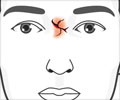A study says a diagnosis of cardiovascular disease (CVD) is associated with a significantly increased risk of subsequent hip fracture, and there may be a genetic predisposition to both conditions.
CVD and osteoporosis, which are common in elderly individuals, have been regarded as independent age-related disorders. Research has suggested that there may be common mechanisms that cause these diseases.Stroke is a well-documented risk factor for hip fracture, but it is uncertain whether other CVDs may increase the risk of future hip fracture.
"It is also unknown whether the risk for hip fracture differs depending on CVD diagnosis and sex, as well as whether the risk reflects lifestyle and individual environmental influences or genetic constitution," the authors said.
Ulf Sennerby, M.D., of Uppsala University, Uppsala, Sweden, and colleagues used information from 31,936 twins in the Swedish Twin Registry to investigate the association between cardiovascular events and future hip fracture risk and to examine to what extent the relation was attributable to genes or associated with other lifestyle factors.
The researchers note that a study that includes twins provides a framework for an ordinary group analysis while simultaneously examining whether the relation between cardiovascular events and hip fracture is explained by genetic and early environmental factors.
The twins, born from 1914-1944, were followed up from the age of 50 years. The National Patient Registry identified twins with CVD and fractures from 1964 through 2005.
Advertisement
In comparison with individuals without CVD, patients with heart failure had about a 4-fold increased rate of hip fracture and individuals with a stroke had 5 times the risk.
Advertisement
"Identical twins without heart failure and stroke also had, after their co-twins had been exposed to these respective diseases, an increased rate of hip fracture," the authors said.
These sibling twins who were considered to be "pseudoexposed" (i.e., the twin without CVD was considered to be "pseudoexposed" to having CVD based of their co-twin having a CVD event) for heart failure had a 3.7-fold increased risk for hip fracture; pseudoexposure for stroke had a 2.3 times higher risk of hip fracture.
"An increased hip fracture risk for the pseudoexposure in the co-twin analyzes, particularly in identical twins, is an indication that genes predispose to the development of CVD and fractures. Most of the overall increased rate of hip fracture after heart failure appears to be explained by genes or by early environmental sharing," the researchers said.
The study appears in the October 21 issue of JAMA.
Source-ANI
ARU














